The forests of Victoria’s Central Highlands are a picturesque greenbelt crucial to Melbourne’s water supply and could soon be included in a huge new national park.

OF THE MANY trees filling the landscape northeast of Melbourne, mountain ash (Eucalyptus regnans) – Earth’s tallest flowering plant – is the area’s most famed species. Yet our guide, Steve Meacher, chooses myrtle beech to explain how the plants of Toolangi State Forest function as a community. Myrtle beech (Nothofagus cunninghamii) grows to 35m, compared with the 70m-plus achieved by mountain ash. But the beech is more durable, with individual trees living more than 400 years, and hosts a diversity of life. “Unlike gum trees [like mountain ash], its bark is permanent so can supply a substrate many other species can inhabit,” Steve explains. “It hosts ferns, liverworts, lichens and a range of mosses.
“They’re forming a community and within that a variety of creatures can live, mostly insects and spiders. And there’ll be other things that feed on them. Different possums like different parts of the tree, for example, and so they can live in the same environment without competing. Each species has its sweet spot.”
The lesson Steve is teaching me is that for Victoria this pocket of forests is itself a sweet spot, one of few such areas left in the state. The Australian Conservation Foundation says more than 66 per cent of Victoria’s native vegetation has been cleared since European colonisation. It estimates that only 1.2 per cent of oldgrowth mountain ash in the state’s Central Highlands remains unlogged and unburnt since 1939, when the last major fire in these parts occurred before 2009’s Black Saturday fires.
この記事は Australian Geographic Magazine の May - June 2019 版に掲載されています。
7 日間の Magzter GOLD 無料トライアルを開始して、何千もの厳選されたプレミアム ストーリー、9,000 以上の雑誌や新聞にアクセスしてください。
すでに購読者です ? サインイン
この記事は Australian Geographic Magazine の May - June 2019 版に掲載されています。
7 日間の Magzter GOLD 無料トライアルを開始して、何千もの厳選されたプレミアム ストーリー、9,000 以上の雑誌や新聞にアクセスしてください。
すでに購読者です? サインイン

SULAWESI SENSATIONS
There are worlds within worlds and marvels untold waiting to be experienced on Indonesia's remote islands.
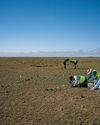
SEARCHING FOR AUSSIE DINOSAURS
Our understanding of where to find ancient life in Australia has been turned on its head by a new appreciation of the country's geology. Now the world is looking to our vast outback as the latest hotspot to locate fossils.
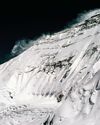
THE HARDEST NIGHT
The first Australian ascent of Mt Everest in 1984 is one of the great feats of mountaineering. Climbed by a small team semi-alpine style, with no bottled oxygen, via the Great (Norton) Couloir, it remains unrepeated 40 years later.
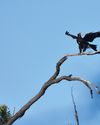
WEDGE-TAILED WONDER
The chance discovery of an eagle nest leads to an extended vigil observing normally hidden behaviours of one of nature's supreme winged marvels.
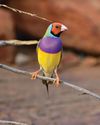
BURDENED BY BEAUTY
Northern Australia's Gouldian finch survives in huge numbers in cages around the world, but its wild population continues to struggle.
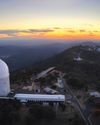
A TELESCOPE FOR A GOLDEN AGE
After a stellar 50 years as one of the country's major scientific assets, the AAT continues to play a major role in keeping Australian astronomy on the world stage.
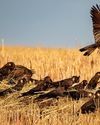
COCKY WHISPERING AT COOMALLO CREEK
This patch of remnant bush on the edge of the West Australian wheatbelt is a place loved by one of Australia's rarest bird species and the man who has studied the site for more than 50 years.

A PIONEERING PAIR
Louisa Atkinson and her mother, Charlotte, were among Australia's earliest authors, and pioneers in women's rights.

THE LONGEST WALK
Lucy Barnard is walking from Argentina to Alaska -the length of the Americas - on an extraordinary journey of endurance and adventure.
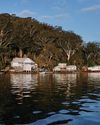
SECLUDED, BUT NOT ALONE
In an era of heightened social isolation, where many of us lead lonely lives, Dangar Island offers the chance to be part of a supportive, connected community.